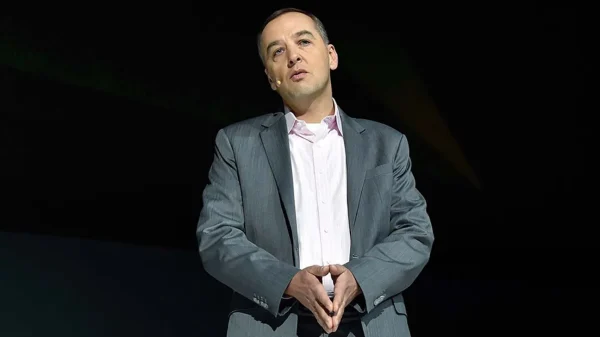Remote work is changing the way cities are designed, lived in, and understood. The change from traditional office routines to flexible working arrangements has caused many people to reconsider where and how they want to live.
This transformation is prompting urban planners, policymakers, and developers to rethink city spaces, infrastructure, and services to suit a new way of living and working. With fewer people tied to daily commutes, cities that once thrived on bustling central business districts are seeing new patterns emerge, affecting everything from housing demand to transportation.

Office towers transform into homes and community hubs (Photo: Getty Images)
Changing Residential Preferences
Since many employees can now work from anywhere, there is less urgency to live close to office hubs. This freedom encourages people to move farther away from city centres, seeking larger homes and better environments for family life.
Suburbs and smaller towns are becoming attractive alternatives because they offer more space, lower living costs, and improved quality of life. This movement away from dense urban centres moves real estate markets and pressures city governments to adjust zoning rules and build new kinds of communities.
Redesigning Urban Spaces
With less dependency on daily office commutes, the need for vast office complexes is decreasing. Some buildings that once hosted large numbers of workers are being repurposed for housing, community spaces, or mixed-use developments.
Public areas are also changing in response to this trend. Instead of catering mainly to rush hour traffic, cities are investing more in parks, pedestrian zones, and bike lanes to enhance the living experience of residents who spend more time in their local neighbourhoods. This change encourages healthier lifestyles and strengthens community ties.
Infrastructure and Transportation Adjustments
Transport systems are undergoing modifications as demand patterns progress. Peak hour congestion is less intense in many cities because fewer people travel to central business districts simultaneously. This change allows public transport providers to rethink scheduling, routes, and the type of services offered.
Investments in digital infrastructure are also increasing, ensuring reliable internet access in more areas to support remote work. Connectivity becomes a key factor for urban development as the ability to work from home depends heavily on stable and fast online networks.
Economic Implications for Cities
Remote work influences local economies in various ways. Businesses that rely on office workers, such as restaurants, cafes, and retail stores around business districts, face challenges due to reduced foot traffic. On the other hand, local businesses in residential areas gain new customers as more people spend time near home.
The diversification of economic activities encourages a more balanced urban economy, less dependent on one sector or location. Cities that adapt to these changes create new opportunities for entrepreneurship and innovation outside traditional commercial zones.
Social and Environmental Effects
The reduction in daily commuting leads to lower pollution levels and less traffic congestion. This development contributes to cleaner air and quieter streets, improving public health and quality of life. Socially, remote work offers flexibility that can help workers balance professional and personal responsibilities better.
However, it may also bring challenges such as isolation and weaker social interactions, making it important for cities to create spaces and programmes that encourage community engagement and support mental well-being.
Future City Planning and Governance
As remote work continues to influence how people use urban spaces, city planners must adopt more flexible, inclusive approaches. Policies will need to support diverse housing options, improved digital infrastructure, and enhanced public amenities.
Collaboration between government, private sector, and communities becomes essential to build cities that accommodate changing needs. Forward-thinking governance will focus on resilience, sustainability, and inclusiveness to prepare urban areas for ongoing changes in work and lifestyle patterns.
Urban Development Trends Shaped by Remote Work
The ongoing change to remote work drives innovation in urban development. Mixed-use developments combining residential, commercial, and recreational facilities become more common, allowing people to live, work, and relax in the same area. Smart city technologies gain prominence, improving management of resources like energy, water, and waste.
These technologies also enhance safety, transport efficiency, and communication within cities. Developers increasingly incorporate green spaces and environmentally friendly materials to create healthier living environments that attract residents seeking balance and comfort.
Housing Market Transformation
With more people relocating away from crowded city centres, housing demand is changing in both suburban and rural areas. Developers are building more single-family homes, townhouses, and low-rise apartments to meet this new preference.
At the same time, urban apartments are redesigned with features that support remote work, such as dedicated office spaces and soundproofing. Housing affordability remains a challenge, but there is a growing emphasis on creating diverse housing stock that caters to different income groups and lifestyle choices.
Changes in Commercial Real Estate
Remote work challenges traditional office space usage. Many companies are reducing the size of their physical offices or opting for shared workspaces and flexible leases. This trend encourages landlords and developers to rethink commercial real estate by transforming older office buildings into residential or mixed-use properties.
There is also growing interest in creating satellite offices or coworking hubs closer to where employees live, reducing commute times and supporting local economies. These changes promote more adaptable and responsive real estate markets.
Impact on Transportation and Mobility
As the need for daily commutes decreases, cities witness changes in transportation modes. More people use bicycles, electric scooters, and walking for shorter trips within their neighbourhoods. Public transport usage patterns change, with less focus on rush hour and more on off-peak travel.
Autonomous vehicles and ride-sharing services continue to grow, providing alternative options for those who still need to travel. Urban transport planners face the challenge of integrating these new modes while maintaining accessibility, affordability, and environmental sustainability.
Strengthening Local Communities
With remote work encouraging people to spend more time in their residential areas, communities are gaining renewed importance. Local events, markets, and recreational activities become central to social life, promoting stronger neighbourly connections. Cities are investing in community centres, green spaces, and cultural programmes to support this revival.
These efforts help to reduce feelings of isolation that some remote workers experience and foster a sense of belonging. Vibrant local communities contribute to safer and more enjoyable urban living environments.
Education and Workforce Development
Remote work is also changing how education and professional training are delivered. Many institutions and companies now offer online courses and flexible learning opportunities that can be accessed from anywhere. This change increases access to education and allows workers to update their skills without relocating.

Parks and bike lanes take priority over parking lots (Photo: Alamy)
Cities that invest in digital learning infrastructure and provide supportive environments for lifelong learning will attract talent and remain competitive in the future economy. Workforce development strategies focus on bridging digital divides and ensuring equal opportunities for all residents.
Environmental Sustainability and Urban Growth
Remote work contributes positively to environmental goals by reducing commuting-related emissions and encouraging energy-efficient buildings. Cities are integrating green building standards, renewable energy sources, and sustainable waste management into development plans. These initiatives support climate resilience and improve quality of life for residents.
Urban growth is balanced with conservation efforts to protect natural spaces and biodiversity. By aligning urban development with sustainability, cities prepare themselves for a future that demands responsible use of resources and careful environmental stewardship.
Cultural Changes Influenced by Remote Work
Workplace culture undergoes transformation as remote arrangements become more widespread. Communication relies heavily on digital tools, while flexibility in work hours becomes common. This evolution affects social norms around collaboration, leadership, and productivity.
Cities adapt by providing spaces and services that support new ways of working, including coworking hubs, networking events, and wellness programmes. Embracing cultural change helps cities maintain economic vitality and social cohesion even as traditional work models progress.
The influence of remote work on urban development is broad and ongoing. Cities that respond creatively and strategically to these changes can become more livable, sustainable, and inclusive. As work and life blend more closely together, the design of future cities will reflect new values and priorities centred on flexibility, community, and environmental care.
Urban life will continue to develop, shaped by technological advances and changing human behaviours. The ability of cities to adapt will determine their success in this new era.
























